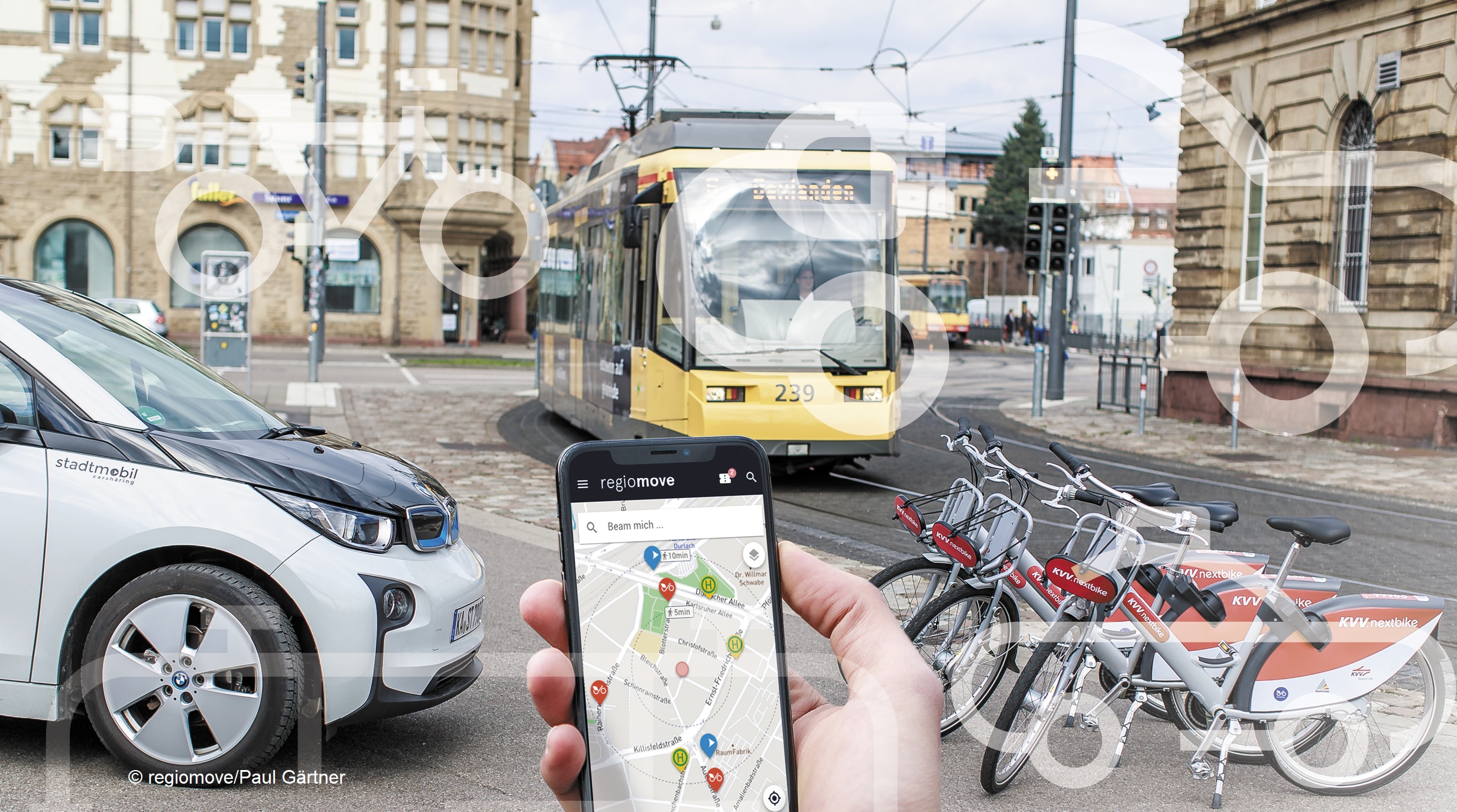I am an economist by education and a doctoral researcher at Fraunhofer Institute for Systems and Innovation Research ISI in Karlsruhe (Germany) and at the Institute for Transport Planning and Systems (IVT) in the Transport Planning group at ETH Zurich. My interest is shared mobility, particularly who uses and could use it for what as well as how it can be supplied on the market. As emissions from transport are still increasing in various countries, shared mobility might be one lever to shift transport away from the private car.
“I am dependent on my car!” is a statement widely heard in discussions about passenger transport in Germany. But: are you? Or are there some new options out there that could help you get around? Let us find out what these new options are, what they can do for your mobility, and what they can do to reduce our carbon footprint.
The unpleasant truth
Although we might not like it: in order to reduce our carbon footprint from transport, many of us need to change their mobility behaviour. Simply substituting internal combustion engines with electric cars will not be enough when including further impacts of motorized individual transport: electric cars are still cars and hence produce the same traffic with similar consequences regarding, for example, land use. One solution to overcoming this would be to shift transport demand away from the private car, for instance using electric carsharing. There are more of these shared services: shared e-scooters and bikes as well as ridepooling, an on-demand service matching people with similar origins or destinations into one vehicle. Some are included in public transport, some are not (yet). However, although supply for shared services has been increasing, usage remains low. Why is that? Let’s look at how potential users decide – also in comparison to their own car or public transport.
How can shared mobility support decarbonisation of the transport sector and what are the crucial service aspects?
When people join a carsharing service, they, on average, reduce their annual transport emissions by 3-18% (data from the Netherlands, San Francisco, and Calgary) compared to before, including all life-cycle emissions. A shared mobility business model draws on the sequential or simultaneous use of vehicles. Thus, because the customer does not own the car, fewer cars can serve more people and they do not have to worry about the vehicle as opposed to the case of a private car that they exclusively are responsible for. Shared mobility results in further emission reductions because it enables and also demands a more multimodal transport behaviour, i.e. using different modes to get from A to B without using the private car as default.
Regarding the private car, costs are the leading decision criterion for choosing this mode, followed by travel time. If the total costs for a private car trip would increase by 150%, the share of people choosing public transport would increase by 6.4%pts., carsharing by 1.1%pts, shared bikes by 0.5%pts., ridepooling by 0.3%pts., and shared e-scooters by 0.3%pts. While these shift potentials are rather small, the price is only one lever and there are many more that can be combined: increase egress, i.e. the time from the vehicle to the destination, and parking search time for private cars through reducing the number of parking spots.
For shared micro-mobility modes, i.e shared e-scooters and bikes, urban dwellers find the travel time to be the leading decision criterion, followed by costs and availability. Interestingly, for shared modes, the time it takes to get to the vehicle is more important than the time to get from the vehicle to the destination. The opposite is true for the private car. This underlines one big advantage of shared mobility: you get closer to the destination with shared vehicles. Either because they are small (micromobility), they tend to have reserved parking spots (carsharing) or they do not need any parking at all (ridepooling and public transport).
Increasing accessibility to shared modes by making their availability more reliable should however not be too excessive to avoid shifting too much from active modes, i.e. walk and bike, or public transport modes to individual and motorized modes that are more energy-dependent.
Why all of us need to understand how we decide between modes
We are traffic. Thus, we need to think more about which mode might be the most attractive one for us regarding the trips we do on a daily or on a less frequent basis. What do we like about our default transport behaviour and what do we not like about it? Might a shared bike help us get to the train station in the morning? Might it be attractive to take a shared e-scooter to the city center, have a beer or two with friends and take a ridepooling service back, without all the hassle of finding a parking spot and the consequence of having still water instead? Understanding this helps us to make situation-specific decisions and it supports policymakers or service suppliers to provide more attractive services. Sharing vehicles also means you do not have to buy any, which brings us back to costs: have you ever calculated the total costs of your private car? Costs for shared mobility services can be observed directly as we receive a bill. Our private car does not produce bills considering the total costs. Hence, although private cars are expensive, we do not realize it in our everyday’s life.
What next?
All of us, be it staff of public transport authorities, business owners, transport users, city planners or policymakers, need to work out where, when, and how shared mobility and its ecosystem can complement public transport. Of course, a pandemic might not be the perfect start for shared mobility. However, we can now develop and build shared transport systems that will last for way longer than this pandemic, let us hope.
Cover photo by Regiomove project (https://www.regiomove.de/).
Keep up with the Energy Blog @ ETH Zurich on Twitter @eth_energy_blog.
Suggested citation: Krauss, Konstantin “Driving or scooting towards shared mobility: what’s in it for urban dwellers?”, Energy Blog @ ETH Zurich, ETH Zurich, December 1, 2021, https://blogs.ethz.ch/energy/share-mobility/
If you are part of ETH Zurich, we invite you to contribute with your findings and your opinions to make this space a dynamic and relevant outlet for energy insights and debates. Find out how you can contribute and contact the editorial team here to pitch an article idea!



Leave a Reply